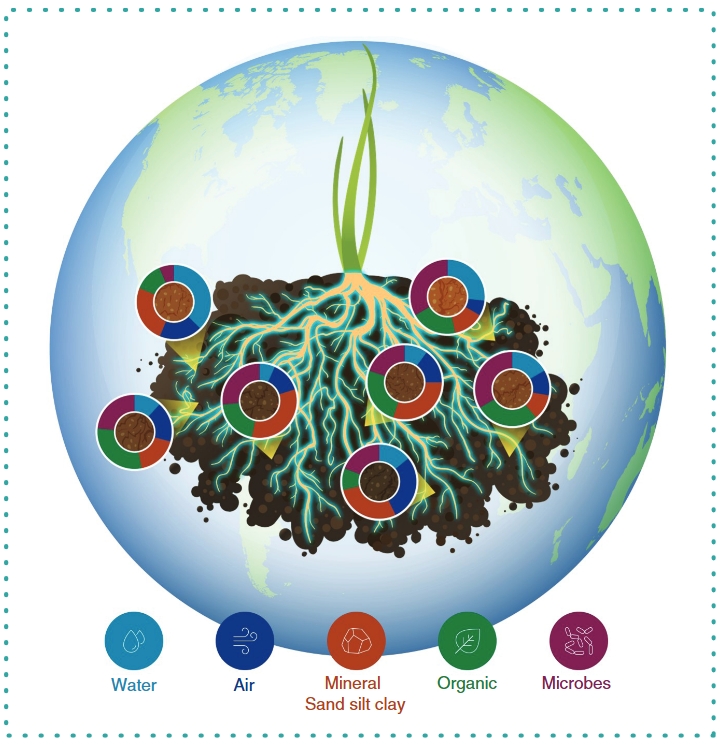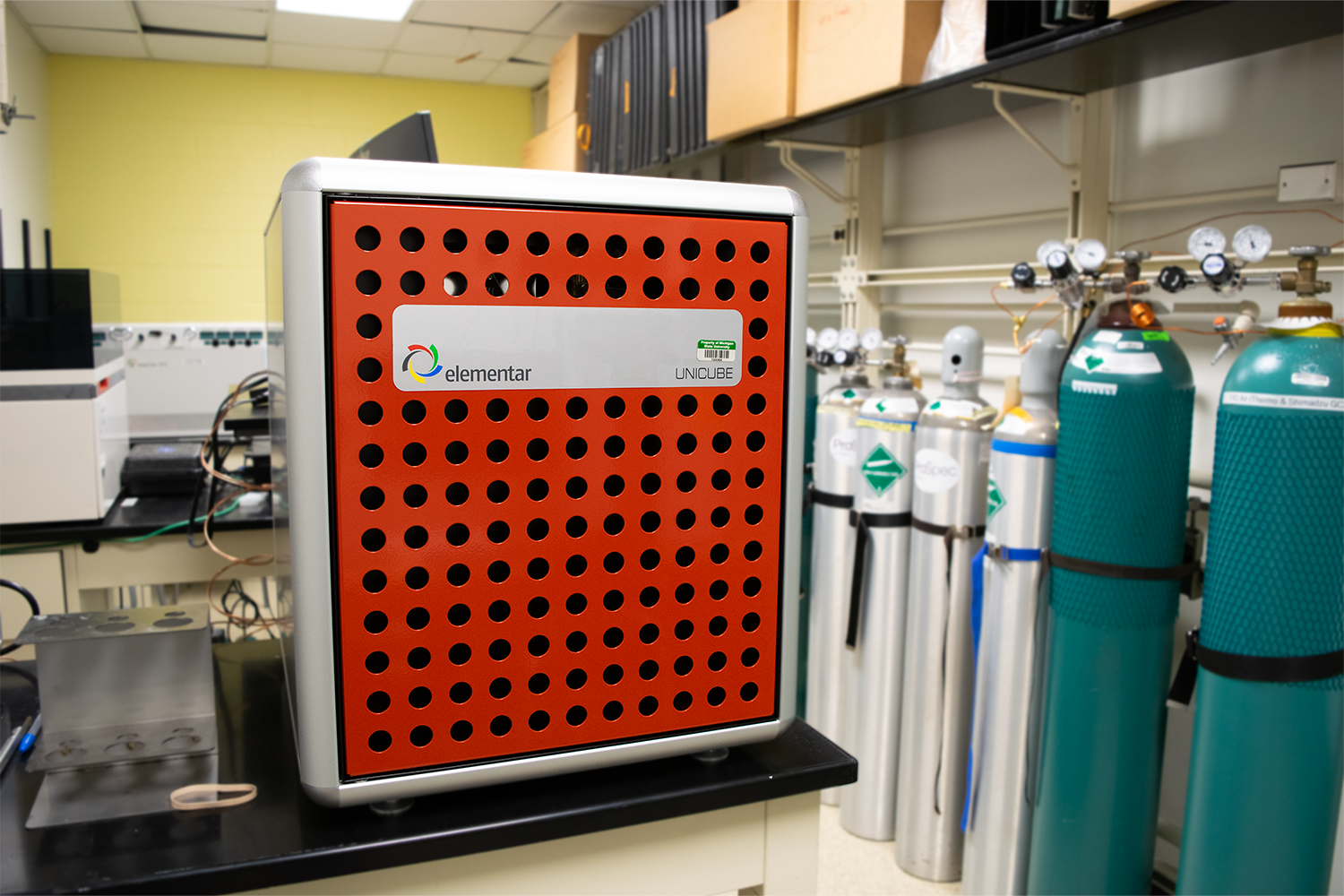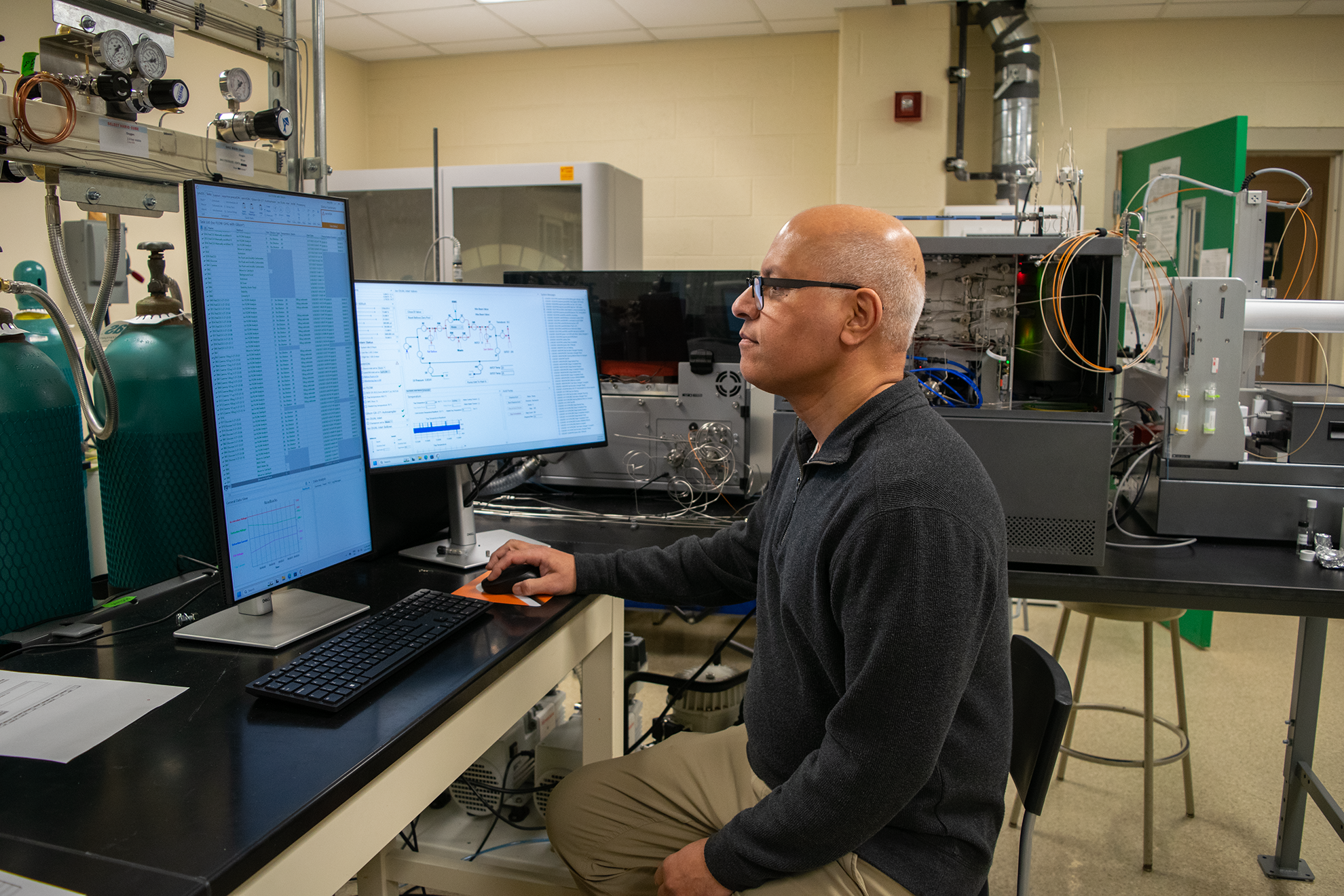We are likely already seeing the beginnings of stresses on world agriculture systems, says James Moran, associate professor with multiple appointments in the College of Natural Science and the College of Agriculture & Natural Resources.
Moran joined Michigan State University in August 2022 as a senior faculty hire through MSU's Global Impact Initiative, bringing his expertise in plant and microbial ecology, augmenting MSU’s deep plant science history. Advancing the science of plants and agriculture is a long-held priority at MSU.
Moran’s research looks at the interactions between plant roots and microbes in the thin region of soil just outside the roots, called the rhizosphere.
This research has implications for increasing agricultural productivity, among other climate mitigation factors. “The rhizosphere may be a small area, but it is a major crossroad for subsurface nutrient exchange, impacting plant health, growth, and carbon introduction to soil,” Moran says.

The rhizosphere is a thin layer surrounding plant roots where various root inputs support a vibrant and distinct microbial community from that of bulk soil.
The Moran Lab uses stable isotope analysis to address an array of questions linked to microbial ecology and plant-microbe interactions in the rhizosphere, with particular interest in tracking them.
New equipment in the Moran Stable Isotope Biogeochemistry Lab, generously funded by the MSU Research Foundation, supports research of biological, chemical, geochemical, and agricultural processes.
Moran explains, “We can use stable isotopes to track and quantify processes in ecology, microbiology, plant sciences, soil sciences, and more. Gaining a better understanding of the environmental factors that influence the intensity of these nutrient exchanges can have far-reaching impacts on improving agricultural efficiency, potential carbon storage and sequestration in soil, and fundamental interactions between plants and microbes.”
"We are at a very exciting point for stable isotope analysis, as emerging instrumentation is enabling measurements that weren’t possible just a few years ago,” Moran says. “For instance, new mass spectrometry approaches are providing detailed analysis of stable isotopes and their distributions within organic compounds.”
Stable isotope analysis has a wide variety of applications. For example, these analyses can provide information on animal feeding habits, help identify environmental contaminants, be used to refine estimates of greenhouse gas fluxes from different ecosystems, enable identification of microbial food sources, and reveal nutrient exchange between different organisms.
The MSU lab focuses mainly on light elements of the periodic table including hydrogen, carbon, nitrogen, and oxygen – central elements in many biology, agricultural, and geologic applications. This highly specialized equipment is now available for researchers at the Stable Isotope Core Facility. Funds for these instruments are supported by a recent $5 million grant from the MSU Research Foundation to advance the university’s world-class program in the plant sciences and critical research in the mitigation of and adaptation to global climate change. Investments like these in research infrastructure offer benefits to researchers, faculty and students across multiple areas of study.
Moran is enhancing the MSU Stable Isotope Core Facility through a move into an updated lab space, refreshing instrument capabilities, and expanding the types of sample analyses offered to the MSU community. The guiding vision is for the core facility to be a resource for the entire MSU research community, offering expertise and stable isotope sample analysis in support of a wide range of studies. Anyone with questions on stable isotope analysis or potential applications for their work is encouraged to contact members of the facility.
Moran is enthusiastic about the expanded opportunities for his research at MSU. “I have always been impressed with the interdisciplinary nature and overall excellence of the research heritage at MSU,” he says. “I look forward to contributing to some of the fantastic work here and its positive impacts locally, regionally, and worldwide.”

New Equipment
New equipment in the Moran Stable Isotope Biogeochemistry Lab, generously supported by a recent $5 million grant from the MSU Research Foundation, supports research of biological, chemical, geochemical, and agricultural processes. Isotope ratio mass spectrometry, like the system shown here, is used to provide highly detailed analysis of stable isotopes within a sample.

Advancing Research
This lab in the MSU Stable Isotope Core Facility focuses mainly on light elements of the periodic table including hydrogen, carbon, nitrogen, and oxygen – central elements in many biology, agricultural, and geologic applications. This instrument measures how much carbon and nitrogen are found in a sample.

Expanding Knowledge
Research Assistant Hasand Gandhi uses the highly specialized equipment in the lab, which is is now available for researchers at the Stable Isotope Core Facility. These core facilities advance the university’s world-class program in the plant sciences and critical research in the mitigation of and adaptation to global climate change.
